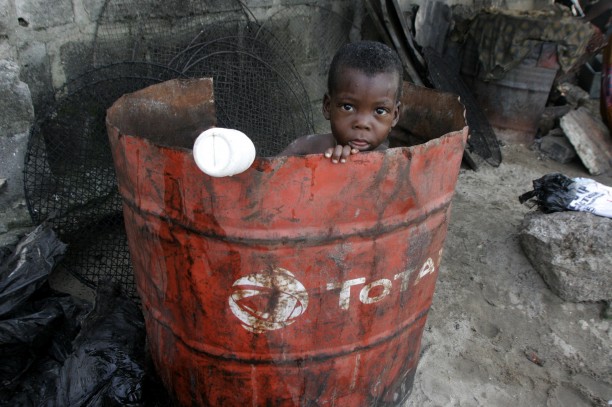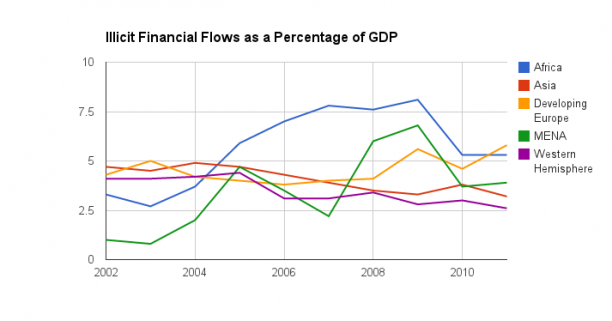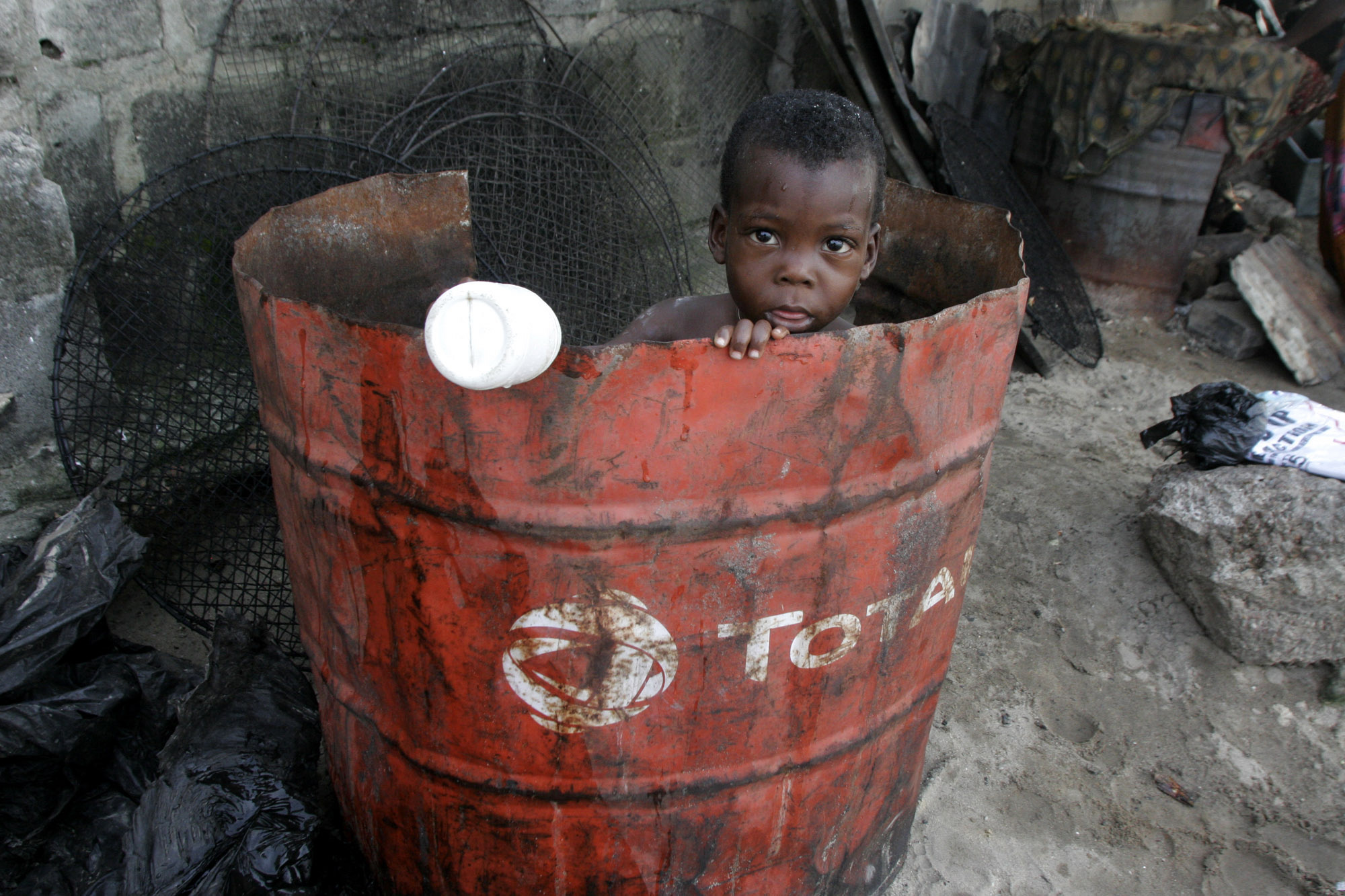
As corruption and crime continue to strip trillions of dollars from developing economies, the problem is being felt most acutely in sub-Saharan Africa, which sees the largest share of its economic output disappear, according to a new report by the transparency campaigners Global Financial Integrity.
In its annual analysis of trade data released Thursday, the organization estimated illicit outflows by region for the first time, showing that Sub-Saharan Africa was losing the greatest share of its GDP to crime, corruption and tax evasion.
The report also said that $946.7 billion had been lost by 150 developing countries in 2011, representing a 14 percent increase over 2010. For the decade ending in 2011, the amount developing countries lost to corruption rose to $5.9 trillion.
Sub-Saharan Africa, where 400 million people live in poverty, accounted for only a small fraction, or 7.7 percent of this amount, but this represented an alarmingly high 5.7 percent of the region’s GDP. While Africa was losing ground, developing Asia and the Western Hemisphere showed gains in combatting corruption. Asia’s share of GDP lost through corruption, fell to 3.2 percent in 2011 from 3.9 percent in 2010, while the Western Hemisphere’s dropped to 2.6 percent from 3 percent in 2010.
The billions of dollars denied to health, education and infrastructure have grown at roughly ten percent a year, outstripping the pace of global economic output. The trillion dollars lost in 2011 represented about ten times the total amount of development assistance received by 150 countries, the report said.

GFI’s Chief Economist Dev Kar, one of the report’s authors, said that the estimates it provided largely did not reflect trade in narcotics, human trafficking, smuggling and other illegal activities that are settled primarily in cash.
“Large as these numbers may look, I don’t think we are able to capture the majority of the illicit flows,” said Kar. “I think these numbers are understated.”
The report’s results nevertheless were a reliable indicator of the levels of illicit activity, he said. Figures on a per-country basis were derived through “gap analyses,” of trade invoices and balance of payments data. Such an analysis compares the cost of goods declared for export against the imports reported by the countries receiving the same goods.
Despite having only the world’seighth largest economy, Russia in 2011 became the world’s largest exporter of illicit funds, racking up $191.14 billion, or more than twice the amount of the country’s averaged losses of $88 billion a year.
Kar attributed this to the rise in oil prices late in the last decade and to weak governance in Russia.
Ahead of the corruption-themed Group of Eight summit in Northern Ireland in June, the British government announced plans to create a central registry of corporate ownership as a check against money laundering and tax evasion.
Stephen B. Cohen, a professor of law at Georgetown University and a member of a task force on illicit finance flows at the International Bar Association, told 100Reporters that while reforms were sorely needed, they were only as good as their enforcement.
“The G20 and the OECD have all issued good statements on this,” he said. “The problem is, once you have good laws, how do you enforce them?”
Kar, the GFI economist, said data suggested a less-than-clear relationship between growth and capital flight.
In Mexico, economic growth coincided with a decrease in outflows — the traditionally expected result as prosperity permits local institutions to grow stronger. The country posted illicit outflows of $38.09 billion in 2011, 17 percent below its average for the decade studied in the report.
But growth in India and Russia saw a corresponding rise in flows of illicit money, according to Kar. India, the world’s tenth largest economy, saw its illicit outflows rise to $84.93 billion in 2011, or 146 percent more than its average for the decade.
“When you have weak governance and you have economic growth, illicit flows increase,” he said. “In other words, reforms need to be dovetailed with oversight.”



















[…] misinvoicing,” or trade fraud, makes headlines every year as the single largest factor in the flow of dirty money tracked by the Washington-based watchdog organization, Global Financial […]